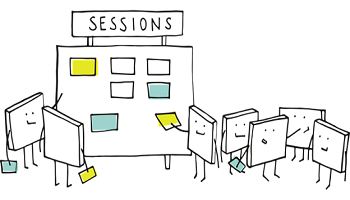5 Ways a Good BA/Developer Relationship is Essential for Project Success
Skillful relationship development and management is number one in the toolbox of successful Business Analyst. But one of the most important relationships a BA needs to cultivate for positive project outcomes is that with Developers.
Depending on project management methodology employed, the ease of managing this relationship can differ. For example, an Agile framework can enhance communication between BA and developer, whereas Waterfall could make it more difficult. However, with careful planning and conduct, the following approaches can ensure the BA/Developer relationship is highly functioning and at its most productive under any circumstance.
- Provide clear and detailed requirements
To make the Developer relationship ultimately functional, BAs must provide clear and concise requirements to the Developer to prevent potentially project-damaging assumptions.
Concise is the important consideration here, because while requirements must be as complete as possible to make the project run quickly and efficiently, don’t mistake excessive detail and unnecessary documentation for detail. These will have the opposite effect.
To determine strategically what information to provide to the Developer, focus on their points of interest such as data elements and sources. Using your experience from previous projects, you should try to provide information that anticipates and answers the questions the Developer might have during the course of the project.
- Get to know the workflow
It goes without saying that to ensure relevant and timely communication with Developers, BAs need a clear understanding of the workflow for each project. But they should also make an effort to understand the corresponding development timeline, processes and tools.
This technical understanding will enable relevant communication of requirements to the Developer in a way that aligns with their established workflow and will be most useful to them for creating an efficient delivery schedule.
Advertisement
- Dedicate time to documentation
By providing essential analysis documentation to Developers, BAs can expedite project delivery by reducing potential ambiguity and assumptions regarding requirements and expectations.
At minimum, documents applicable to any project should include detailed data modelling to ensure product delivered meets stakeholder expectations; acceptance criteria to facilitate successful testing and output; and a roles and permissions matrix for all stakeholders to enable efficient development process and analysis.
- Explore the unstated
To aid the development process and support a positive Developer relationship, it’s important that BAs bring to light any implicit project requirements and provide these in detail to the Developer.
Project proposals usually include the stakeholder’s explicit requirements, but must be analyzed deeply for insight into what other requirement have not been included but are nevertheless essential for project success.
By developing a 360° outline of all potential requirements or Developers, BAs can usually prevent assumptions and therefore disappointing product output.
- Contribute to QA
To build a successful relationship with the Developer, BAs should focus on supporting the Quality Assurance project phase.
During the QA phase, BAs should use their expertise and insider knowledge of business processes and solution expectations to determine potential bugs and defects early. By doing this, they can offer Developers feedback on identified risks often and early to ensure User Acceptance Testing processes are more efficient – and ultimately safeguard against delivery delays and project failure.




